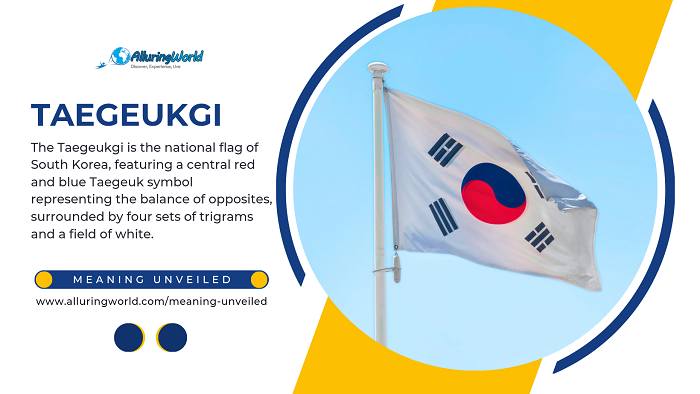Read time ca. 2 minutes
The national flag of South Korea, commonly known as the Taegeukgi, is a striking symbol that encapsulates the rich history, cultural values, and aspirations of the Korean people. This iconic flag consists of a vibrant combination of colors and unique design elements, with its most prominent features being the four black trigrams and the central Taegeuk circle. Here we will delve into the meaning behind the lines on the South Korean flag and explore the cultural significance they hold.
The Taegeuk Circle:
At the heart of the South Korean flag lies the Taegeuk circle, divided into two equal parts by a sinuous line that resembles the letter ‘S.’ This central element is derived from the ancient Eastern philosophy of Yin and Yang, symbolizing the cosmic duality and balance inherent in the universe. The blue section represents the negative cosmic forces (Yin), while the red section represents the positive cosmic forces (Yang). Together, they emphasize the harmonious coexistence of opposing energies, promoting balance and unity in Korean culture.
The Four Black Trigrams:
Surrounding the Taegeuk are four black trigrams, each placed in one of the four corners of the flag. These trigrams are derived from the traditional Korean philosophical system known as the ‘Bagua,’ which represents eight fundamental elements of existence. In the South Korean flag, four of these elements are incorporated:
- Geon (☰): This trigram represents heaven and symbolizes creativity and the father.
- Gon (☷): Representing earth, this trigram embodies receptivity and the mother.
- Ri (☲): Signifying fire, this trigram is associated with dynamic energy and the eldest son.
- Gam (☵): Representing water, this trigram symbolizes adaptability and the second son.
The combination of these four trigrams encapsulates the interconnectedness of heaven, earth, fire, and water, echoing the traditional Korean worldview and the belief in the cosmic order that governs the universe.
Unity and Harmony:
The lines on the South Korean flag, both in the form of the Taegeuk and the four trigrams, emphasize the profound cultural values of unity and harmony, where the balance between opposing forces, the interconnectedness of elemental energies, and the coexistence of complementary elements all reinforce the importance of unity in Korean society.
In conclusion, the lines on the South Korean flag tell a captivating story of ancient philosophies, cultural values, and the enduring spirit of the Korean people. As we unravel the symbolism behind the Taegeuk and the four trigrams, we gain a deeper appreciation for the intricate design and the profound meaning embedded in this iconic national symbol. The South Korean flag stands as a testament to the rich heritage of a nation that values balance, unity, and harmony in the face of diverse and dynamic forces.

